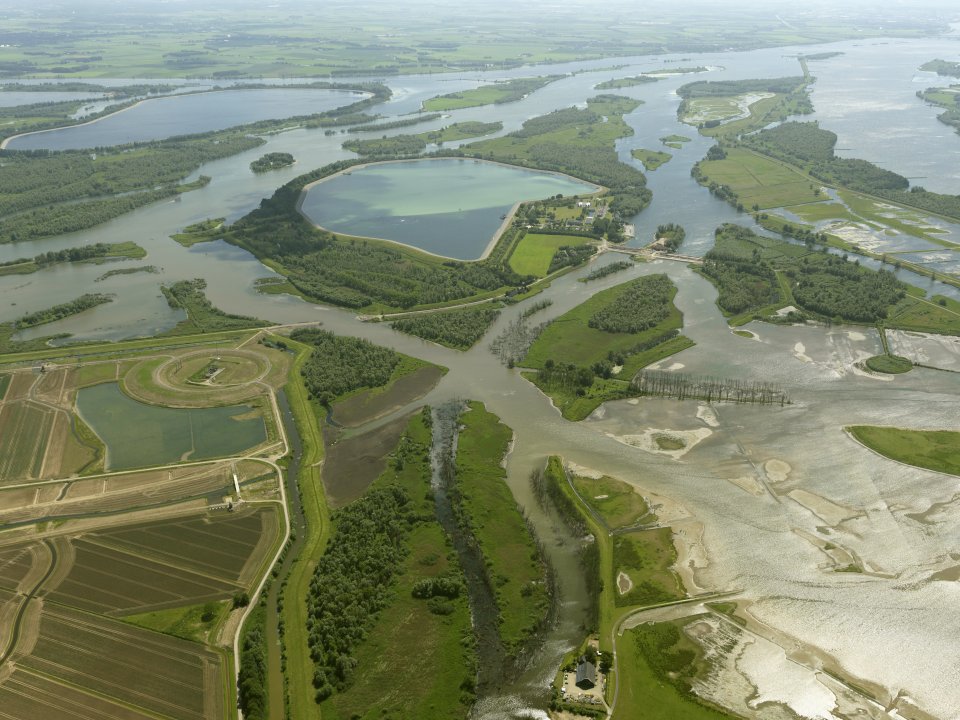
The Rhine branches starting at the Dutch/Germany border, including a total length of 300km of large floodplain rivers in an area of around 50000 ha. The adjacent land covers rural as well as peri-urban and urban areas.
The aim of this case study is the creation of ecological flood retention by changing land use, reconnecting floodplains and change of sluice management in summer dikes. Floodplains are reconnected and side channels restored or their creation supported, with longitudinal main channel dams benefitting both shipping and nature.
This case study is one of 17 that are part of the EU Horizon2020 project MERLIN - Mainstreaming Ecological Restoration of freshwater-related ecosystems in a Landscape context: INnovation, upscaling and transformation.
Summer dike sluices are closed, retaining water in the floodplain. Pilots proved that water could be retained long enough to foster biological production structured in a food web of invertebrates, fish and opportunistic predators.
- flood risk reduction & environmental quality
- biodiversity enhancement
- recreation potential
- land use transition
- Developing climate change adaptation; improving risk management and resilience
- Flood peak reduction
- Reduce drought risk
- Reduce flood risk
- Restoring ecosystems and their functions
- Improve connectivity and functionality of green and blue infrastructures
- Increase Biodiversity
Further information
- 6. Clean Water and Sanitation
- 13. Climate Action
- 15. Life On Land
- 17. Partnerships for the Goals
